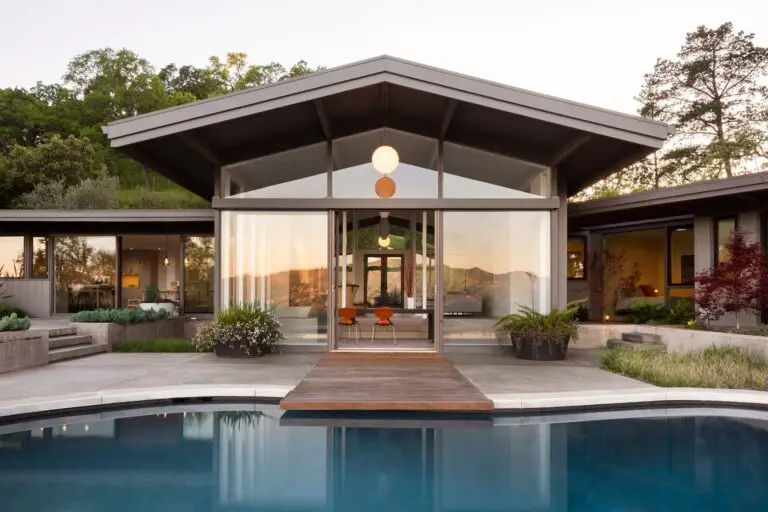Accessory Dwelling Units (ADUs) are becoming a hot trend in the real estate world, and for good reason. Whether you’re looking for extra space, a rental income opportunity, or a cozy retreat for family, adding an ADU to your property could be the perfect solution. But before you dive into construction, here’s everything you need to know to make an informed decision.

An Accessory Dwelling Unit (ADU) is a small, self-contained living space located on the same property as a primary residence. ADUs come in various shapes and sizes, including detached units like cottages or garages, or attached units like basement or attic conversions. Essentially, an ADU is an additional living space that can serve as a rental property, a guest house, or even a home office or studio.
ADUs can be either full-sized or junior units depending on your needs and the space available. The beauty of an ADU lies in its versatility, offering homeowners the flexibility to use it for multiple purposes. The growing demand for affordable housing has also contributed to the rising popularity of these units, as they provide an efficient and practical living solution.
While the idea of adding an ADU to your property sounds exciting, not every homeowner is eligible to build one. The rules and regulations around ADUs vary by city and state, so it’s important to check with your local zoning office or city planning department before starting construction.
Factors to consider include:
Many cities, however, are making it easier to build ADUs by relaxing regulations, offering incentives, and speeding up permit approval processes. Be sure to review your city’s ADU policy to ensure you’re fully informed.
The cost of building an ADU can vary greatly depending on factors such as location, size, design, and construction materials. On average, homeowners can expect to spend anywhere from $100,000 to $250,000 for a new ADU. Here’s a rough breakdown of costs:
Costs tend to be higher if you plan to build a larger ADU, incorporate high-end finishes, or face difficult site conditions. Don’t forget to factor in the cost of permits, as they can be significant in some areas.
While building an ADU can be expensive, there are several strategies you can use to save on construction costs:
Go Small: The smaller the ADU, the lower the cost. Consider building a compact unit with a minimalist design to save on both materials and labor.
Use Prefabricated Designs: Modular or prefabricated ADUs can be more affordable and faster to build compared to traditional custom designs. They also offer flexibility in terms of expansion or relocation.
Repurpose Existing Structures: Instead of building from scratch, consider converting an existing structure like a garage, basement, or shed into an ADU. This can save you money on foundation and framing costs.
DIY Some Tasks: If you have the time and skills, consider taking on some of the work yourself, such as landscaping or painting, to cut down on labor costs.
Shop Around for Contractors: Get multiple bids from contractors to ensure you’re getting the best price for the materials and labor.
Financing an ADU is similar to financing other home improvements, but there are a few options that may be more specific to your needs:
Home Equity Loan or Line of Credit: If you have substantial equity in your home, a home equity loan or line of credit (HELOC) can be a great way to finance an ADU.
Cash-Out Refinance: If interest rates are favorable, refinancing your mortgage and taking cash out can provide the funds needed to build an ADU.
Personal Loan: For smaller ADUs, a personal loan might be a feasible option if you have a good credit score and need to borrow a relatively small amount.
ADU-Specific Financing Programs: Some cities or states offer special loan programs to encourage homeowners to build ADUs, often with lower interest rates and favorable terms. Check with your local government to see if such options are available.
Rent Out the ADU: If you plan to rent out the unit, you can use future rental income to help pay off the loan, making financing more manageable.
When it comes to hiring professionals for your ADU, there are several key roles you’ll need to fill:
Architect/Designer: Unless you’re using a prefab design, you’ll need an architect to help plan the ADU’s layout and ensure it complies with local codes and regulations.
Contractor: A general contractor will oversee the construction of your ADU, coordinate labor, and manage the project timeline.
Specialized Trades: Depending on the scope of your ADU, you may also need specialized professionals such as plumbers, electricians, and HVAC technicians to handle specific systems.
Before hiring anyone, be sure to check their credentials and experience in building ADUs. It’s always wise to get multiple bids and read reviews or request references from past clients.
Yes, building an ADU can increase the value of your home—often significantly. An ADU not only adds additional living space but also provides a potential income stream, both of which can make your property more attractive to buyers.
The exact increase in value will depend on several factors, including the size of the ADU, its functionality, and the real estate market in your area. However, on average, an ADU can increase your property’s value by 20% to 30%.
Additionally, ADUs make properties more appealing to multi-generational families, renters, and those seeking home offices or creative spaces.
Pros:
Cons:
Adding an ADU to your property can be a rewarding investment, offering everything from additional income to greater property value. However, it’s important to weigh the costs, zoning restrictions, and potential challenges before diving in. By understanding the financial, practical, and legal implications, you can make a smart, informed decision about whether an ADU is the right move for you.
Are you ready to take the leap into ADU construction?
Orlando In The City
Minnesota & Florida
Dellwood Realty
763-516-6908
Minnesota 55121
I agree to be contacted by Your Dellwood Realty via call, email and text. To opt out, you can reply “stop” at any time or click the unsubscribe link in the emails. Message and data rates may apply.

